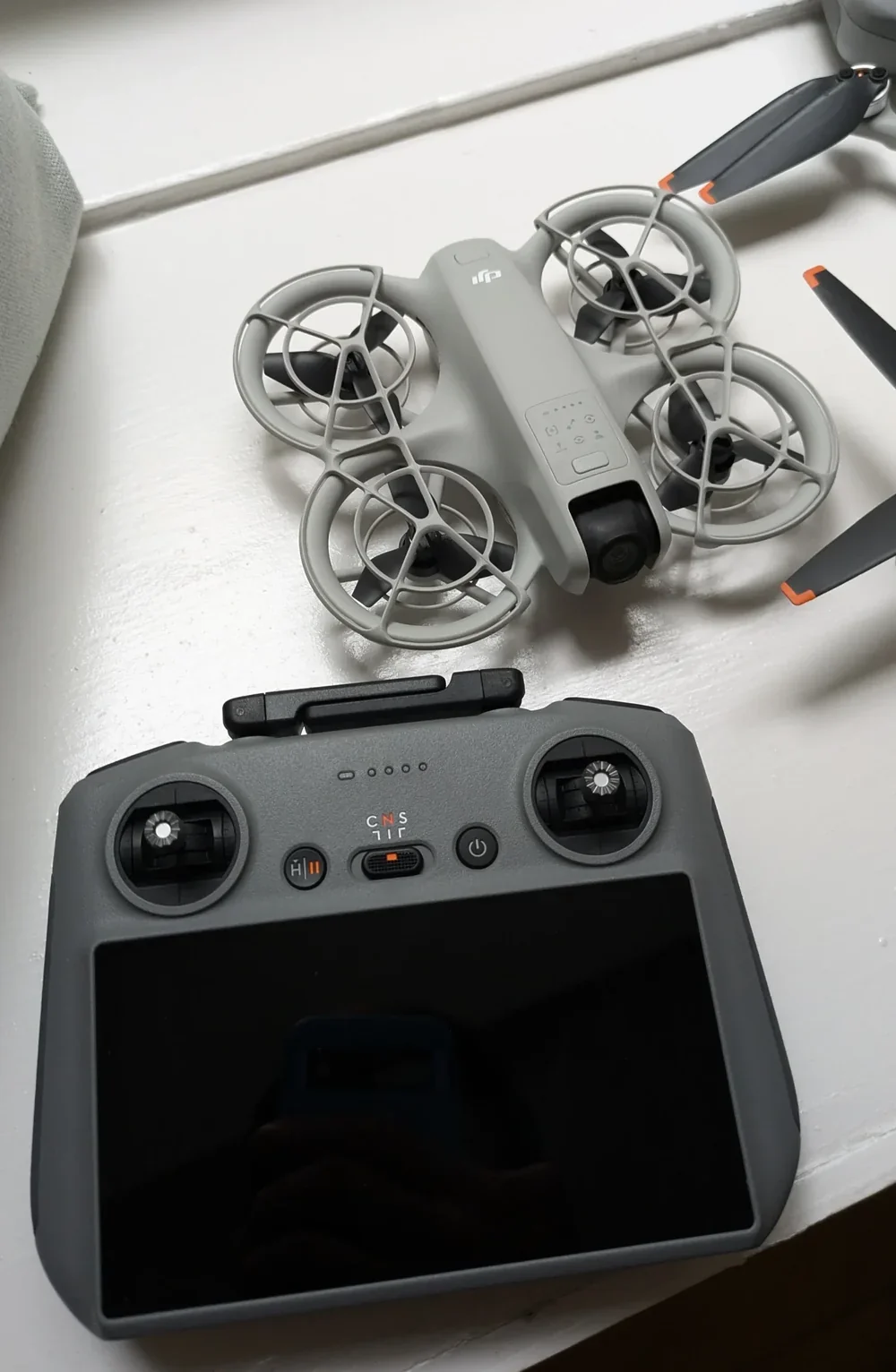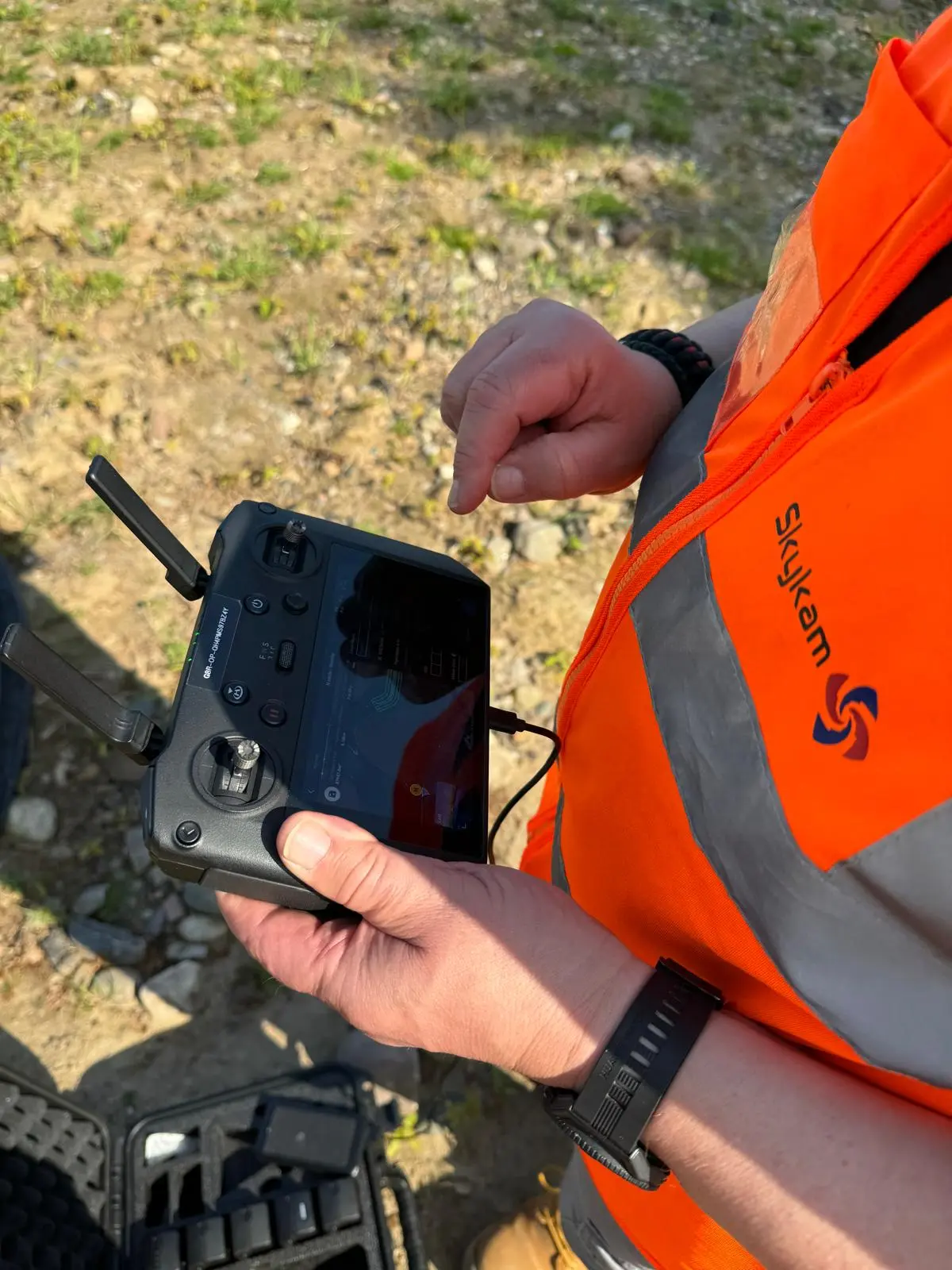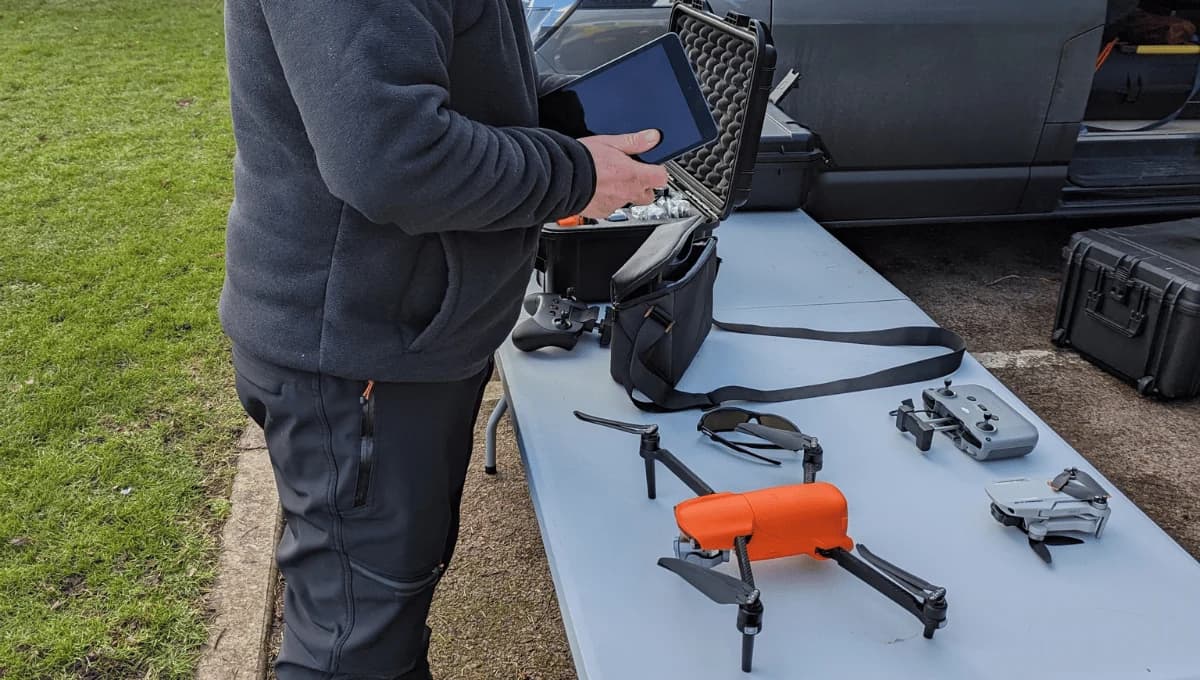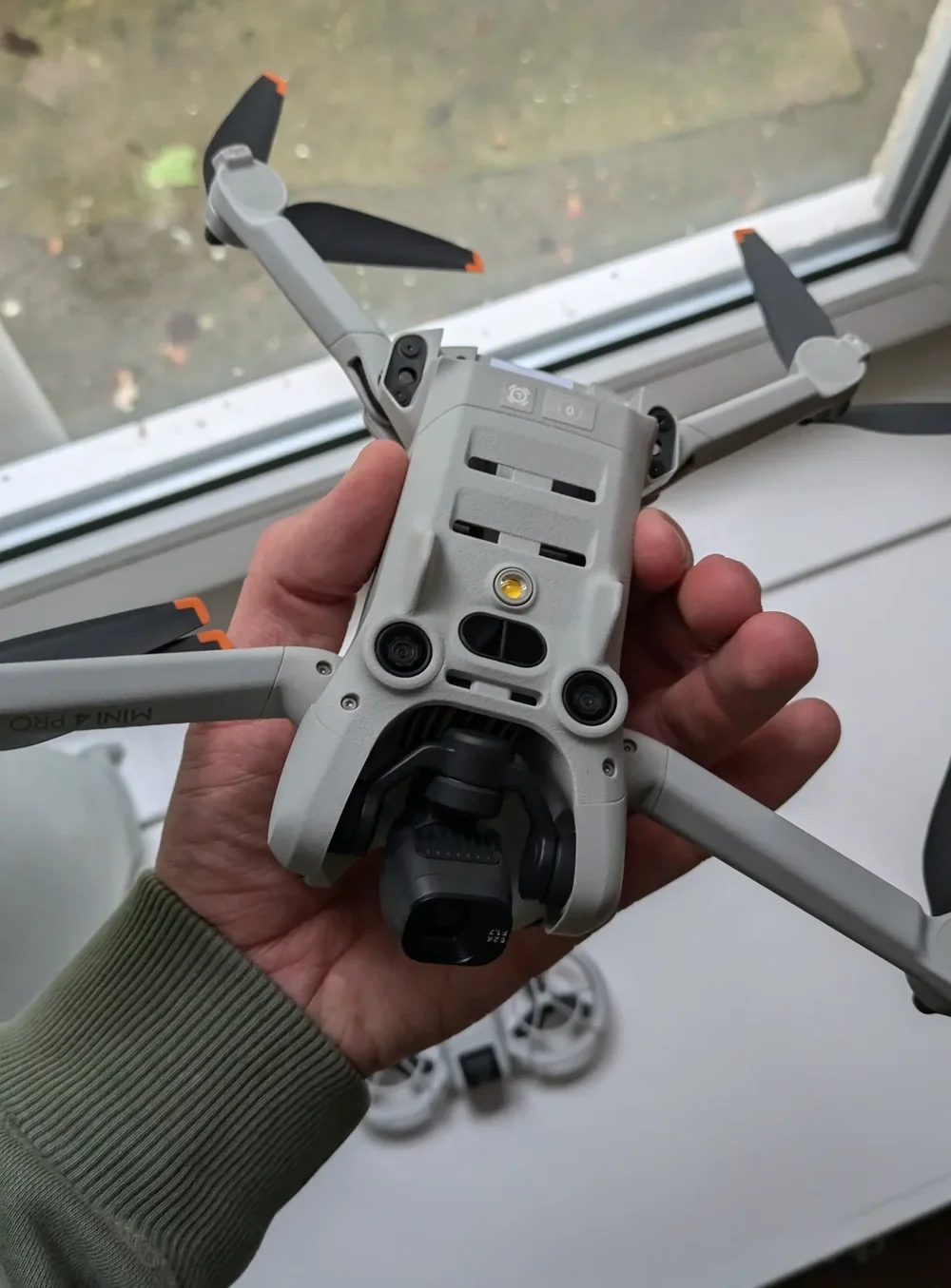
The truth is, your drone likely isn't connecting because of a handful of common, easily fixed issues that I've dealt with countless times on as a drone pilot for hire on commercial jobs.
It's rarely a catastrophic failure; more often, it's something as simple as Wi-Fi interference from a nearby building flooding the 2.4GHz band, a firmware mismatch after an automatic app update, or even a slightly corroded battery terminal preventing a solid connection.
Whether you're unboxing a brand new drone or trying to revive an old favorite, this guide will walk you through the exact professional checklist I use to diagnose and solve connection problems in the field, saving you a frustrating call to customer support.

30 Second Summary
- Low battery levels in either the drone or controller can prevent proper connection and signal transmission
- Improper binding between the drone and controller requires following the manufacturer's rebinding procedure to reestablish communication
- Electronic interference from Wi-Fi networks, Bluetooth devices, or urban environments can disrupt the connection signal
- Outdated firmware in either the drone or controller may cause compatibility issues and connection failures
- Physical damage to antennas, contact points, or battery terminals can prevent proper signal transmission between devices
Quick Fix Checklist
Before diving deep, run through these five common solutions. They solve over 90% of connection problems I encounter.
Check Power & Cables: Ensure both batteries are charged (at least 2 solid lights). Unplug and firmly reseat the USB cable connecting your phone to the controller, or try a different cable entirely.
Change Location: Move at least 50 feet away from any buildings, Wi-Fi routers, or large metal objects to avoid signal interference.
Correct Power-On Sequence: Turn the controller on first, then the drone. Wait for 30 seconds without moving either device.
Rebind the Aircraft: In the app's "Control" menu, use the "Pair to Aircraft (Rebind)" function to re-establish the connection.
Restart Everything: Power off the drone, controller, and close the app on your phone. Then, restart your phone completely before trying the power-on sequence again.

Charge or replace the drone and controller batteries before attempting to connect
One of the most common yet overlooked reasons your drone won't connect to its controller is insufficient battery power. For a DJI drone, press the power button on the battery once; the LEDs will light up to show the current charge level. If it's below two bars, it's best to charge it fully before attempting to connect.
I've learned this the hard way. More than once, I've seen a battery report 50% charge, only to have it die minutes into a flight because the cells are degraded, impacting the drone battery life. I now use a dedicated battery checker before any important job to see the health of each cell, not just the overall charge. It’s a small step that has saved me from losing a drone.
Replace batteries that no longer hold a charge or show signs of swelling. Keep spare batteries on hand for longer flying sessions. Remember, even new drones sometimes ship with partially charged batteries requiring immediate charging before first use.
Inspect and Reseat Your Connection Cables
It sounds simple, but the USB cable connecting your controller to your phone or tablet is one of the most frequent culprits for connection failure. These cables get bent, twisted, and worn out. Before you dive into complex fixes, unplug the cable from both the controller and your device. Check the ports for any dust or debris and firmly plug it back in. If that doesn't work, try a different, high-quality cable. I once lost half an hour of good light on a shoot because a cheap, frayed cable I'd grabbed on my way out the door was causing intermittent data drops. Now, I always carry a spare.

Power on the controller and drone within close range to establish connection
Proximity matters for successful pairing. Most drones require you to be within 3-10 feet of the controller during the initial connection. Power on your devices in the correct sequence. For a DJI drone, this means powering on the controller first (one short press, then one long press on the power button), then turn on the drone.
I can't stress this enough: patience is key during startup. I've seen people get frustrated and start moving the drone or controller around when it doesn't connect instantly. You have to give it that quiet moment to establish a solid handshake. I always place the drone on the ground, step back a few feet, and let the devices do their thing without interruption.
Rebind the drone and controller by following the manufacturer’s pairing process
When standard troubleshooting fails, rebinding often solves persistent pairing issues. This reestablishes the unique communication channel between your devices.
Honestly, this is my go-to fix for about half of the weird connection problems I encounter. For a DJI drone, power on both the aircraft and the controller. Open the DJI Fly app, tap the three dots in the top-right corner to open the menu, navigate to the "Control" tab, and tap "Pair to Aircraft (Rebind)." The controller will start beeping. You then have 60 seconds to press and hold the power button on the drone until it beeps to confirm the pairing.
Move away from areas with heavy Wi-Fi or Bluetooth interference
Electronic interference represents one of the most common culprits behind drone connection failures. Modern environments are saturated with competing signals that can disrupt communication. In the DJI Fly app's camera view, tap the three dots, go to the "Transmission" tab, and look at the graph at the bottom. If you see lots of spikes and interference (red and yellow areas), it's a clear sign you need to move. Relocate to an open space away from Wi-Fi routers, power lines, and large metal structures.
I was once trying to fly near a seemingly empty industrial building and couldn't get a stable link. It turned out the building was full of high-powered Wi-Fi repeaters. Moving just 100 feet away made all the difference. Never underestimate invisible interference.

Check that the controller is set to the correct frequency or mode for your drone
Many modern DJI drones handle frequency switching automatically to find the clearest channel. However, you can check this in the Transmission settings within the DJI Fly app. It will show you whether you're on 2.4 GHz or 5.8 GHz. You can switch from "Auto" to "Manual" to select a specific channel if you notice one is significantly clearer than the others, which can sometimes stabilize a weak connection in a noisy environment.
It's surprisingly easy to accidentally change a setting in the app without realizing it. I make it part of my pre-flight checklist to glance at the transmission settings before I even power on the drone itself.
Update the firmware on both the drone and controller to the latest version
A mismatch between the firmware on your controller and drone can prevent them from communicating. If an update is available, the DJI Fly app will typically show a pop-up on the main screen. Ensure both your controller and drone batteries have at least 50% charge, connect to a strong Wi-Fi network, and follow the on-screen prompts to download and install the update.
My golden rule is to never, ever perform a firmware update in the field. I always do it the night before a flight, at home, with a reliable internet connection and plenty of time. I’ve seen fellow drone pilots brick their drones by trying to update using a spotty mobile hotspot right before a job. It’s just not worth the risk.

Inspect the controller and drone’s receiver for hardware faults and replace if needed.
Hardware issues can often be the culprit if your drone won't fly. Check for visible damage on both the controller and the drone. On many DJI controllers, the antennas fold out; make sure they are positioned correctly (usually pointing upwards) for the best signal. Look for bent pins in connection ports or cracked casings.
My pre-flight check always includes a quick but thorough physical inspection. I once had a drone that wouldn't connect, and after checking everything else, I noticed one of the tiny antenna pins inside the controller's port was slightly bent. A gentle nudge back into place with a pair of fine-tipped tweezers, and the connection was perfect. It’s often the smallest things that cause the biggest problems.
Frequently Asked Questions
Why Does My Drone Disconnect Mid-Flight After Successful Initial Connection?
Your drone may disconnect mid-flight due to battery issues, radio interference, exceeding the controller's range, or firmware problems. You're likely experiencing drone signal loss when your drone flies behind obstacles or enters areas with strong radio frequency competition. Check your batteries, update firmware, and avoid flying near structures that might block transmission signals.
Can Weather Conditions Affect My Drone's Connectivity to the Controller?
Yes, weather conditions significantly affect your drone's connectivity. Strong winds can push your drone beyond controller range. Rain and moisture interfere with radio signals and can damage electronics. Extreme temperatures impact battery performance and signal strength. Fog and heavy cloud cover reduce visibility and signal penetration.
What Do the Different Flashing Lights on My Drone Mean?
Those flashing lights are your drone's way of communicating its status, and they are your single best diagnostic tool. A slow green flash is different from a rapid yellow one, and the sequence can tell you if you're in GPS mode, have a drone compass error, or are ready to bind. The key is that these codes are unique to each manufacturer and model. Your drone's user manual is the definitive guide. I recommend taking a photo of the light code section in your manual with your phone so you always have a quick reference in the field.
Will Using Third-Party Accessories Impact My Drone's Connection Reliability?
Yes, third-party accessories can significantly impact connection reliability. Non-certified add-ons may cause signal interference or create compatibility issues. For optimal performance, stick with manufacturer-approved accessories. If you've recently added accessories and experience problems, try removing them to troubleshoot.
Can Smartphone App Issues Prevent Proper Drone-Controller Communication?
Yes, smartphone app issues can definitely prevent proper communication. If your app is outdated, has corrupted data, or is experiencing conflicts with your phone's OS, it can lead to wifi connection issues. Try updating the app, clearing its cache, or reinstalling it completely. Also, check if your phone's Bluetooth or Wi-Fi settings are interfering with the controller's signals.
How and why should I calibrate my controller?
Controller calibration ensures the drone accurately interprets your stick inputs. While it doesn't usually fix a total connection failure, a miscalibrated controller can sometimes cause the app to throw errors that prevent a proper link-up. To calibrate, go to the 'Control' tab in the DJI Fly app's menu and select 'Calibrate Controller.' The app will guide you through moving the sticks and wheels through their full range of motion. I do this every few months as a matter of good practice, or anytime the drone feels like it's not flying straight.
Still Grounded? Hire a Professional Pilot
You're now equipped with the essential checklist to solve most drone connection issues, from checking batteries and cables to rebinding and updating firmware. But when these steps fail and your project is on the line, the problem may require a professional's expertise or replacement hardware.
For commercial operations, downtime isn't an option. That's where HireDronePilot solves the challenge, connecting businesses with verified professional drone pilots for hire who are flight-ready with expertly maintained equipment.
Our network of certified pilots has the technical experience to manage their fleet, ensuring connection issues don't delay your project.
As the UK's premier managed marketplace, HireDronePilot.uk allows you to streamline drone services through competitive bidding, ensuring quality, compliance, and value for every aerial project across the United Kingdom.
Don't let technical glitches ground your critical operations. Post your job on HireDronePilot today and connect with a certified professional who is ready to fly.
About the Author

Written by
Peter Leslie
Peter Leslie is a CAA-approved commercial drone pilot with 10+ years experience and over 10,000 flight hours. He holds the GVC and A2 CofC drone licences with full CAA Operational Authorisation. Peter is a member of ARPAS-UK, the UK's non-profit trade association for the drone industry. He founded HireDronePilot to connect UK businesses with qualified, insured drone operators.
Looking for More Drone Work?
Join the UK's leading network of professional drone pilots and grow your business.
Open Access
Bid on any job - all jobs open to all pilots
Grow Revenue
Access high-value commercial projects
Stay Busy
Fill your schedule with regular work
Related Articles

Our Drone Survey Service In Stirling, Scotland
Bringing you Stirling drone survey data from areas no one else can fly.

How Much Does A Drone LiDAR Survey Cost
Forecasting your drone LiDAR survey cost requires understanding what's hidden beyond the initial quote.

Step By Step Process Of Drone LiDAR Survey
Next, discover the crucial post-flight steps that determine your survey's success.